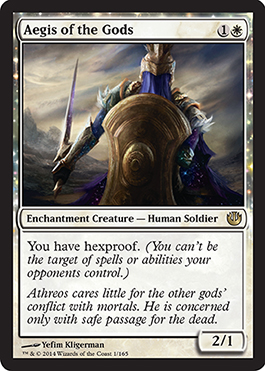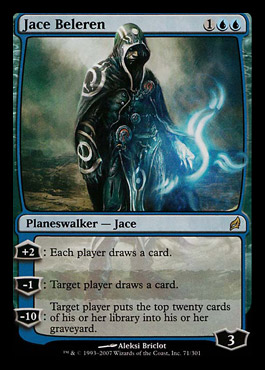Not sure how many people in here play any TCG’s but I love me some Magic: The Gathering. The ancestor of basically all modern Trading Card Games project management is a never ending cycle of R&D.
Magic: The Gathering is a 20+ year old TCG(Trading Card Game) and since Mark Rosewater became lead designer has become known for giving away all his secrets. He has a weekly column, a blog and a podcast, through which he elaborates in great detail the processes behind building one of the world’s most successful games. As well as other fun tidbits!
Keep complexity out of common
In his Making Magic columns, Rosewater has detailed an interesting strategy to combat Magic’s then-declining audience after publisher Wizards of the Coast found that it was failing at new player retention. Magic is supremely complex, with extensive and intricate rules for when players can do what and how, making it difficult for newcomers to start playing – especially as hundreds of new cards are added every year to the 13,000+ that have been introduced so far.
They used to have a rating system that they’d print on products indicating to players the level of complexity in any given set. Starter, Advanced, and Expert.



The old way however would wind up isolating newer players with entire blocks (which can last a year+) maybe being above their player knowledge and vice versa with more expert players wanting more complex mechanics. The solution Rosewater and his team came up with is a design ethos – called “New World Order” – that focused on the complexity of the “common” cards that make up the bulk of randomly-assorted Magic booster packs. Designing commons to be less complex for a new player and pushing that complexity towards rarer cards, the game could stay deep and engaging to experienced players while also being easier to learn for novices.
Lenticular design
Any project will involve catering to multiple stakeholders/investors, and Rosewater has found a solution for managing the needs of different audiences in Magic. He found that cards could reveal varied levels of complexity to multiple groups of players.
This philosophy, called “lenticular” design – which is named after the ridged printing method that shows an image changing when viewed from different angles – meant that the game could design cards that had an obvious use for beginners, but have unconventional use or strategic depth for skilled players.
They also use this design for their set products, designing products with multiple purposes that appeal to the masses of the community instead of one secular group. (Commander sets, Intro Decks, Supplemental Blocks)


If your theme isn’t at common, it isn’t your theme
A facet of effective project collaboration is communicating the priorities of a strategy across a team and to stakeholders. Everyone involved should know what the plan is attempting to do, and where it’s going. Setting useful goals that establish indicators based on a project’s priorities that can measure success is a crucial way for everyone involved – especially managers – to evaluate that those priorities are being met, according to CIO.
Having good project visibility is also helpful for making everyone feel invested in the success of the larger task at hand.Ensuring that people are aware of a project’s goals means that they will be able to work more in line with those objectives. Magic is very strict about setting themes that tell a story and doing expansive research into it, taking up to 3+ years for each set.
Making Magic mentioned a metric that Wizards designers use known as “as-fan” to evaluate the prevalence of a theme or mechanic in an expansion. Referring to a pack of cards “as fanned out,” the team can see whether the set’s priorities are being reflected in what a player will experience when looking through the cards in a pack. Do the cards convey the theme the set or product sets out to achieve?
In Magic boosters, common cards show up twice as often as other cards and make up the meat of a card environment. Those cards form a player’s initial impressions of a set, so in his column, Rosewater stressed showing a set’s values in the common cards. If they don’t show off the themes of the set, then it’s much harder to convey them to the player. Be that in the art or mechanics that comprise each set/block.


Restrictions breed creativity
The Designer Fund Bridge Blog stated that projects constrained in certain ways force creative innovations. In order to truly think outside of the box, one must first exhaust everything in the box.
The solution, according the source, is to apply limitations. Just about every project is restricted by time or budget, and good resource management sometimes needs clever solutions to seemingly insurmountable problems.
Rosewater often speaks about how one of the best ways to find a creative solution is to use limitations that force the creative mind to try something new. During the planning of a recent expansion, he gave his designers a rule that it had to utilize an experimental framework for use with a popular Magic format. The designers came back with a strategy that not only implemented the structure, but also unexpectedly solved a number of narrative problems that the Wizards creative team was facing.

In order to keep a game like Magic popular for more than two decades when other trading card games have come and gone, Wizards has had to heavily innovate to attract new players and retain old ones. Be those innovations be in card design or product design. And not only is it a popular game, it’s a successful business. According to Rosewater, 2014’s large set, “Theros,” was the best-selling in the game’s history and every year since 2008 has been the best year for Magic yet.


Conclusion/End Phase

Magic: The Gathering is a fluidly designed game, seeking input from external sources, doing polls regularly seeking fan/critics input each time a new product comes out. Card’s designs are always changing throughout conception, design, implementation, and even beyond that Wizards of the coast keeps an eye on all their formats that players participate in removing/restricting/unrestricting cards for different formats depending on new cards they create or old ones that new cards can interact with. They’re in a constant agile state of mind which leads to a happy and healthy card game. Like any project, keeping agile and in tune with the customers wants while also doing what needs to be done for the project/company leads to less butting heads down the road and Waste Not hours if a project fails.

0 Comments